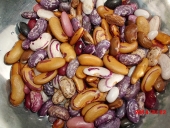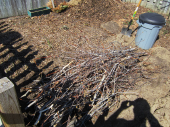








My books, movies, videos, podcasts, events ... the big collection of paul wheaton stuff!









Brenda
Bloom where you are planted.
http://restfultrailsfoodforestgarden.blogspot.com/









NewAtThis wrote:
I am interested in Synergistic Gardening after watching a video about it on youtube. I'm a new gardener and have some questions and concerns if I choose this method of gardening. Maybe someone knows some of the answers...
1. She says in her video that she plants Fava Beans as a cover crop...
Does this mean I have to plant only Fava beans every year. Is there someone else following her method who plants other cover crops and, if so, what are they?
2. She only uses transplants as she keeps the soil covered by a mulch at all times.
How would I plant carrots or chard? I read that they don't do well as transplants. The video does not say that she uses cardboard as I recall. Planting seeds straight into a flat row with my Earthway Seed planter I bought last fall seems like it would be faster.
3. Boise is a dry climate. Do I want to use raised beds due to using more water?
4. I read that some crops, such as corn, grow better on the flat vs. raised beds.
Thanks for any input!
Beth













Paul Cereghino- Ecosystem Guild
Maritime Temperate Coniferous Rainforest - Mild Wet Winter, Dry Summer

|
Everybody! Do the Funky Monkey! Like this tiny ad!
2024 Permaculture Adventure Bundle
https://permies.com/w/bundle
|


